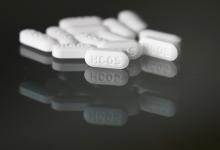FDA Final Guidance on Interchangeability with Biosimilars Save

The FDA has published an industry guidance document to define interchangeability as regards to biosimilar use in the United States under section 351(k) of the Public Health Service Act (PHS Act) (42 U.S.C. 262(k)).
The 351(k) pathway defines the abbreviated process of approving a biosimilar agent based on a previously approved biologic or reference product. For instance, this rule would govern the switching from the reference product (Enbrel) to its biosimilar (Erelzi) and then back to either Enbrel or another biosimilar (Eticovo, AKA Benepali) of Enbrel without concern for immunogenicity, safety or loss of efficacy.
The term interchangeable or interchangeability states that a new biological product has been shown to meet the standards ob biosimilarity and that “the biological product may be substituted for the reference product without the intervention of the health care provider who prescribed the reference product.”
interchangeable product must “...be expected to produce the same clinical result as the reference product in any given patient.” A designation of interchangeability will allow a product to be substituted for its reference at the pharmacy level in the United States.
To date, the FDA has already licensed 19 biosimilar products, and there are currently seven biosimilar versions of currently marketed TNF inhibitors; and none of these had clinical trial data that would allow them to claim "interchangeability".
To be an interchangeable product, the required data may include:
- Identification and analysis of critical quality attributes
- Identification of analytical differences and an analysis of the potential clinical impact of such differences
- An analysis of the mechanism of action in each condition of use
- An analysis of differences in expected pharmacokinetics (PK) and biodistribution in different patient populations
- An analysis of differences in expected immunogenicity risk
- An analysis of differences in expected toxicity
- Information on factors that could affect safety or efficacy
According to the guidance, data and information under the “can be expected to produce the same clinical result as the reference product in any given patient” legal standard are not likely to involve additional clinical studies (other than those that support other elements of demonstrating interchangeability).
As is the case for demonstrating biosimilarity, the manufacturer does not have to seek interchangeability for all indications of the reference product, yet the FDA suggests there are instances when this would be preferred. To be extrapolated to additional indications, the sponsor will need to provide justification that addresses the mechanism of action, differences in expected PK or biodistribution, differences in expected immunogenicity, differences in expected toxicity, or other factors that could affect safety and efficacy.
Interchangeability applications will not all be the same and may result in negotiated planning with the FDA to gain "interchangeability".
Switching studies will be the benchmark required to support interchangeability and should evaluate changes in treatment that arise after 2 or more alternating switch intervals.
The primary endpoint of the switching study should assess the impact of alternating between the products on clinical PK and PD, immunogenicity, efficacy and safety. Retrospective data will not suffice as evidence in an interchangeability application.










If you are a health practitioner, you may Login/Register to comment.
Due to the nature of these comment forums, only health practitioners are allowed to comment at this time.